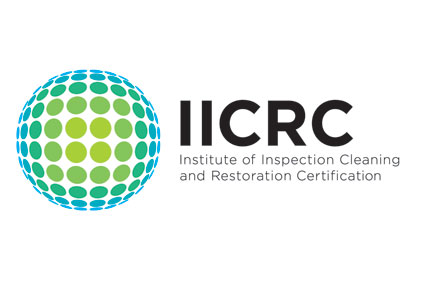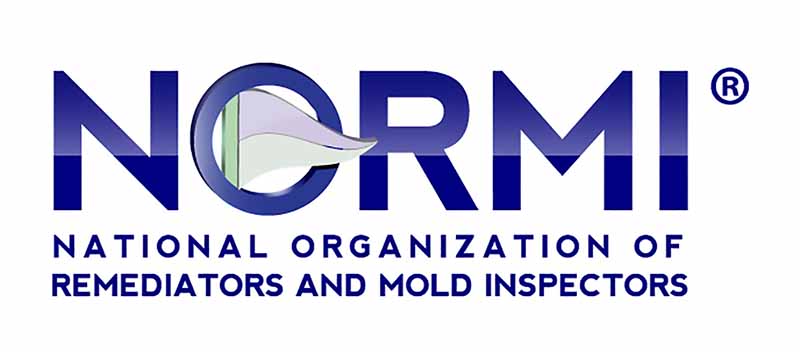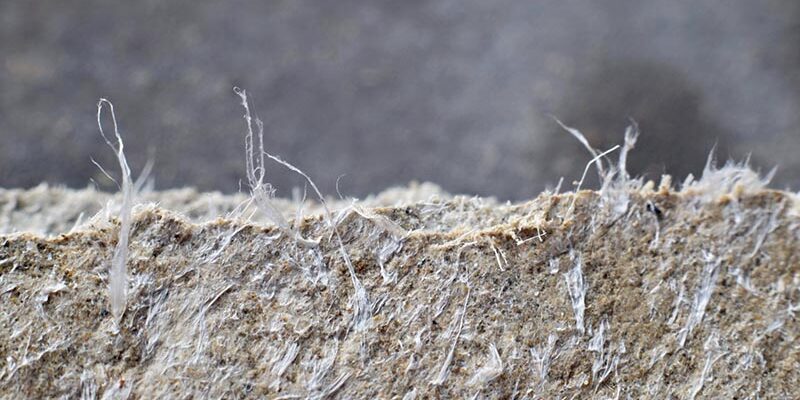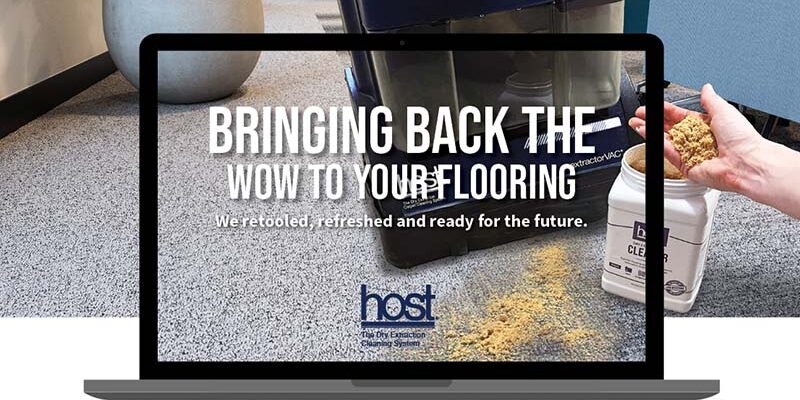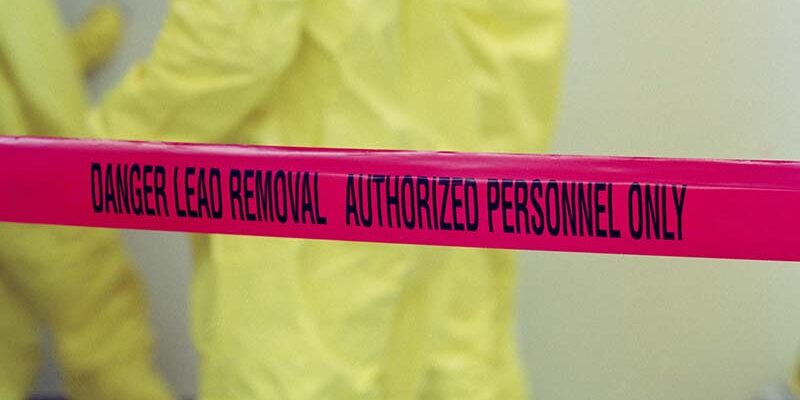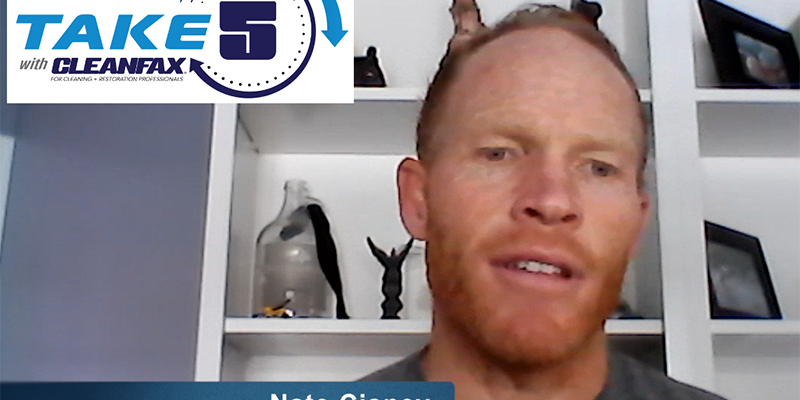State of the Carpet Cleaning and Restoration Industry Report

After careful consideration of what issues are currently having the greatest impact on the small businesses in our industry, experts from some of the leading associations weighed in on what is currently affecting us, what the future will look like and how we can prepare in this carpet cleaning and restoration industry report for 2021.
What effect has the pandemic had on our industry?
Downey: Oddly, the pandemic has caused both great hardship and great opportunity in the industry. In addition to my role as executive director of CIRI, I own a carpet cleaning business. The first two months after the lockdowns began, my cleaning business virtually vanished; sales were down 90%. For the next several months, through the summer, sales were between 50% and 80% of normal. Since September we’ve been crazy busy, as people who normally schedule cleaning in the spring or summer joined many of our regular fall customers in search of clean carpet and a return to normalcy.
I suspect my company’s experience has been roughly the norm among professional carpet cleaning companies. I write this shortly before the Christmas holiday, in the midst of the second wave, as vaccinations have begun. Thus far, business remains roughly normal for this time of the year.
Hoffman: There are a couple of things I think are interesting about what’s happened. Obviously, people are currently focused on COVID-19, so most of what has happened in the industry from our viewpoint is that there’s been a shift in the assessment side of the industry. Of course, the industry is split in half: You’ve got assessors who identify the problems and recommend solutions, and then you’ve got the mediators who actually do the work.
It’s interesting because, on the assessment side, I think they’re pivoting their businesses more toward a sanitization process that is more comprehensive, broader sweeping—rather than dealing just with mold, thinking about indoor air quality (IAQ) and how what they do creates a cleaner, healthier, safer environment. To that end, we actually created a class for that, the NORMI Certified Sanitizing Professional (CSP). It incorporates ISSA GBAC training with our advanced IAQ training, focusing both on dealing with surfaces and the air.
But that’s on the assessment side. On the remediation side, I think there’s an awareness that they’ve got to be a lot more thorough in their cleaning processes, even if they’re not more specifically cleaning for COVID. They realize they’ve got to reduce microbial load in the environment on surfaces and in the air so that they can assure their clients they’ve got a cleaner, healthier, safer environment. I think general sanitization has become a really big factor.
Springer /Rosebrook: The pandemic has required restoration companies to pivot and adjust in these unprecedented times. Dealing with business disruption, managing risk, and managing labor shortages have presented significant challenges to our industry during the pandemic.
However, a positive outcome of the pandemic has been a more unified industry and increased collaboration among industry associations. The IICRC, RIA, and American Industrial Hygiene Association (AIHA) have worked together to help restoration professionals provide essential services in this rapidly evolving and ever-changing landscape by developing “The COVID-19 Pandemic: A Report for Professional Cleaning and Restoration Contractors.” RIA also partnered with IICRC and the HVAC Inspection, Cleaning & Restoration Association (NADCA) to issue a joint statement to promote restoration and cleaning contractors as essential personnel to ensure they were able to continue delivering service during government-mandated shut downs.
We continue to see joint collaboration and sharing of education across associations that touch the restoration industry, which is something that will continue to benefit restoration contractors in the long term.
Tole: There was certainly a pause in the cleaning/restoration industry in the beginning while governments, businesses, households, and individuals came to grips with the pandemic and had to find their own comfort zone and level of risk exposure. Locally, we have entered a second shutdown, but we have found little change in the average consumer’s concern as far as exposure is concerned. Those who wore masks still do and those who didn’t, still don’t.
Opportunities to use the pandemic to a company’s advantage also have arisen. Educating consumers that cleaning has always been the first step in disinfection has led to increased opportunity for business and gaining new clients. Unfortunately, and as usual, some companies also are exploiting the opportunity, selling disinfectant processes that may not offer what was promised to consumers.
Access to necessary PPE and its restricted sales has likely been the most common obstacle to business that I can see. Detergents and disinfectants have not changed, but access to respirators and chemical-resistant gloves was government controlled in my region. Full-time restoration companies had limited access to these items, and cleaning companies still have less access to purchase them from local suppliers.
The IICRC, like most companies, had to adjust and change to survive. Thanks to the well-timed new and permanent CEO, the IICRC regrouped and pushed ahead its live-streaming plans quickly, which allowed companies to acquire needed training during an unexpected business lull.
My own cleaning business has seen a noticeable increase in gross sales simply because people are home more and see their cleaning needs while also having more time to organize and schedule cleanings. Establishing one’s cleaning company as a trustworthy and responsible one to enter customer homes at this time is key to success.
Vermeulen: I see both a positive and negative impact on our industry. Some of the positives are that people in general are more aware of professional cleaning and disinfection. This could lead to a higher level of awareness for consumers, businesses, and, hopefully, different levels of government. It’s high time that the government, at all levels, recognizes the importance and significance of professional cleaners and restorers. It’s time for a mandate on using professionally trained and certified technicians to do this work.
It also has made a lot of our industry’s firms realize the need to be more diverse in the services they offer and the level of training their staff need to successfully provide services to clients. Many firms have been very successful throughout the pandemic because they were prepared to provide the required services the public wants to protect their homes and buildings against the spread of COVID-19.
The negative impact is far reaching. Our residential-based cleaning firms have been challenged by clients not wanting them in their homes and buildings. Many consumers are too worried about the virus coming in. With thousands or millions of people working from home, many office buildings in the Toronto Core are closed. This leaves janitorial, carpet cleaning, and carpet maintenance companies without work, reducing staff hours and creating looming possible layoffs.
What is the most important issue facing the industry outside of (can be related to) the pandemic?
Downey: The pandemic has opened up new opportunities for cleaning professionals; probably the most obvious is in disinfection services. This can be a double-edged sword. Proper disinfection needs to include effective cleaning because soils deplete the effectiveness of disinfectants.
[three_fourth]
[/three_fourth]
[one_fourth]
Since the pandemic began, both cleaning professionals and consumers have been inundated with advertisements for disinfection products and services. They are often comprised solely of broadcast spraying of disinfectants, including biocides, using foggers or electrostatic spraying devices. These are shortcuts with foreseen and unforeseen consequences related to both efficacy and adverse health impacts on occupants (biocides are poisons). It is important that industry professionals resist the temptation to seek short-term gain at the expense of long-term credibility.
Hoffman: Curiously enough, you would think that there would be a lot of people looking for work given the current unemployment level, but finding really good, qualified, well-trained personnel is still really tough. Even hiring people back who were furloughed seems tough because they’re coming back into kind of a different industry in some ways. They’re more concerned about PPE, and they’re going to have to be better trained. So, I think personnel is probably the most difficult thing that we’re facing right now—finding really good, qualified employees who can do the work.
Springer / Rosebrook: It’s critical that restoration companies unite and advocate for sustainable claims practices and take a proactive approach with insurance carrier claims policies. If not, the restoration industry as we know it will cease to exist within a decade. RIA’s Advocacy & Government Affairs (AGA) Committee is working to advance industry positions that will help create and maintain equity between restorers and insurers and their partners, while working collaboratively and fairly with insurers and the other stakeholders involved in the restoration process.
RIA’s AGA Committee is working to address restorers’ most prevalent issues related to pricing, working with third-party administrators, and working with third-party consultants. AGA has developed position statements, convened town halls, and delivered educational sessions all designed to level the playing field for restorers and ensure a sustainable claims environment for the future. The ongoing effort will be critical to addressing the most important issues impacting the restoration industry.
Tole: To repeat myself a bit, limited access to PPE and the increase in demand and cost of PPE certainly is a monetary cost facing cleaning/restoration companies.
Lack of understanding that sanitizing is a process rather than a chemical is likely the largest issue our industry faces. The belief that spraying or fogging a disinfectant will transform an affected environment into a safe one is not going to go away soon. Advertising on social media for foggers and sprayers as well as “trained application services” certainly does not help spread this education to the general public. IICRC training is key to success in this industry. We understand cleaning, and, together, we cleaners are the potential resource to help and for our clients to count on.
Vermeulen: The most important issue facing cleaning and restoration firms today is (and always will be) the need to strengthen their client base through marketing, training, and certification for staff and to provide high-quality service to their clients. This will provide business opportunity, growth, and job security for their staff, which will reduce staff turnover and provide advancement for staff within their businesses.
This is achievable through many very accessible means available in today’s marketplace. Marketing programs, social media, IICRC Certifications and Standards, plus good, old-fashioned hard work and dedication are needed to compete against the competition.
We still have too many untrained people and firms, who don’t know about industry standards or government legislation, competing for the same business as qualified companies, and this muddies the waters for everyone. Get trained and learn the standards and legislation.
How can owners strengthen their businesses despite the pandemic?
Downey: Position your company as part of the solution, not part of the problem—then walk your talk by acting accordingly. Regardless of your personal views or opinions, always follow established safety protocols such as masking, use of hand sanitizers, and, to the extent possible, social distancing when in your customers’ homes. Between jobs, take steps to sanitize your equipment.
Be thoughtful in the cleaning processes you employ. High-performance cleaning fundamentals are essential. Avoid processes that merely level soil to improve appearance in favor of processes that maximize extraction and minimize residues.
Hoffman: I think if they would take the time, and a lot of them are, to really better understand the problem of COVID (or viruses in general and general microbial loads), and learn how to pivot more toward meeting the demands of the industry, it will strengthen their companies. If they’re just waiting around for a mold call, it’s going to be less likely that they get that kind of call than someone who’s concerned about sanitizing their environment.
Since the very beginning when we first started training, we always taught our guys to promote themselves as IAQ/mold assessors and IAQ/mold remediators. If businesses can shift their thinking, if they can think in that broader view of the industry, I think they’re going to be more successful. The ones who seem to be struggling right now are the guys who are just waiting for some water event so they can chase it down and sell a remediation project.
Springer / Rosebrook: Focus on company culture. The businesses that are thriving are focused on strong leadership, instilling confidence and calm within their teams, and ensuring proper protocols are in place to protect the health and safety of their employees and customers. They are focused on providing exceptional service to their customers and delivering on what they’ve promised. Another essential aspect of success in these tumultuous times is to understand your numbers and manage your cash flow. This is critical to long-term stability.
Tole: As in any time, diversification always helps strengthen our industry. We have numerous diversification options available to cleaning/restoring companies. Offering multiple cleaning services, as well as new sanitizing opportunities, is a great way to strengthen any business. Educating your customers on the paramount importance of cleaning in the process of disinfection is key to opening the doors to new business opportunities.
Marketing to your existing customer base that you are still open and operating safely within homes and businesses is key. No less than once a day, clients and potential clients call and are surprised we are still operating safely without government restrictions. One secret I have known about for years now is the need for our high-level cleaning knowledge within retirement home communities—even simple carpet cleaning services and spot cleaning services. Most of these businesses allow only a few minutes for in-house staff to clean carpet and have limited access to useful equipment, process training, and spot cleaning products. Our education in containment, access to air filtration devices, application of sanitizing processes, and access to trained cleaning staff that will wear PPE, make us a large resource to this industry as well as others. Cleaning is the first step in any sanitizing process, and we definitely know cleaning! Reach out and offer your expertise.
What do you think the industry will look like a year from now?
Downey: I suspect and hope that a sifting will have occurred. In 1993, Dr. Michael Berry published Protecting the Built Environment: Cleaning for Health. In it, Berry made the case that cleaning workers should be on the frontline of public health efforts. His book received wide acclaim within the industry and had a significant, if short-lived, impact.
The pandemic has again raised awareness of the value of proper cleaning. This time there is widespread public awareness. Cleaning professionals again have an opportunity to establish a new paradigm about the value of effective, high-performance cleaning. I anticipate that those who do will be members of a different industry than those who don’t.
Hoffman: There’s no doubt there will be a lot more concern about air and surfaces. This has been a big shift, so indoor air quality is a bigger consideration. I think there will be more concern about personal protective equipment and making sure that controls are in place and properly done. I suspect that in the next year, there will be more companies doing sanitization and looking for protocols to guarantee their work has been done and done correctly.
To that end, we started, after Katrina, producing what we call a NORMI Certificate of Sanitization. Based on objective pre- and post-testing, it satisfies and confirms to the customer that the job was actually done properly. The NORMI member submits information to us, our compliance division approves, and then the customer gets mailed directly to them a certificate of sanitization. That’s been a huge step in the right direction since Katrina, and I think, for customers who know about that program, there’s going to be a larger demand for that. They want some confirmation that things are clean. We also just unveiled a monitoring program that actually will monitor surfaces and air specifically for SARS-CoV-2, so businesses can guarantee based on the monitoring that they are continuing to keep a safer, healthier, cleaner environment.
Springer / Rosebrook: A few key predictions for the restoration industry a year from now include changes in labor such as management and office staff wage increases. Technology will be driven by insurance needs, COVID-19 restrictions, cost restrictions, and the experience of virtual workforces. Technologies for estimating, administration and production, and the science of drying will play an important role in the industry. Mergers and acquisitions will continue to impact the industry. Restoration proved to be an essential industry and a valuable resource in an investing world starving for yield. Lastly, insurance companies will strive to create underwriting profits at a time with labor and material inflation.
Tole: I expect a year from now our industry will be largely back to normal. We will likely still have minimal restrictions in place, and some clients will still have increased concerns and request PPE to be used within their homes and businesses.
If we educate our customers now, they will be very open and interested in more frequent cleaning and open to using more of our services. I have found this year that my clients not only requested cleanings of what we normally scheduled annually, but also were very keen to clean other areas, such as showers, floor tile, air duct systems, etc. because they trusted us and were spending so much more time at home. The residual effects of this will undoubtedly be good for our industry.
I also expect a surge in new companies in 2021, as there is after any economic downturn, in addition to the well-publicized need for cleaning/disinfection services. There will be an increase in competition and opportunity.
Vermeulen: I believe the industry will look exactly the same next year as far as the firms involved, with the exception of those who diversify and invest in marketing, education, and industry standards. Those firms will be miles ahead of the rest.
Anything else you would like to add to your cleaning and restoration industry report?
Downey: “Be Not Afraid” is the message on the poster that hangs on my office wall. It is visible over my shoulder whenever I am in an online meeting, podcast, or webinar now. The poster is there to remind me and those who share my day of an eternal truth during this time when fear threatens to render us impotent: We can and must overcome our fears. The pandemic is a useful reminder that there are things beyond our control. But we still control how we react to them. Don’t surrender to your fears. Understand them for what they are, then let them go.
Hoffman: I really want to underscore the Certified Sanitizing Professional training program. We started it in April, and over 280 people attended in the first week. I think it’s going to be really important for the student to learn how to apply what he learned on this particular situation and broaden his views about indoor air quality and the impact cleaner IAQ and surfaces can have on the public. People are concerned about opening up, and I think the best way our industry can support that effort is by assuring them we are using the right protocols. That’s what we’re here to try to do.
Tole: Our customers should be more aware of the importance of cleaning following this pandemic, and we can expect to see a significant increase in cleaning companies as the opportunity increases; therefore, there will be an increased need for IICRC training as well.
Vermeulen: In closing, learn more about infection control, professional cleaning, and disinfection through IICRC Certifications or GBAC Protocols; participate in IICRC Standards writing and revisions; and educate staff so they can perform the expected tasks according to industry standards and government legislation.







